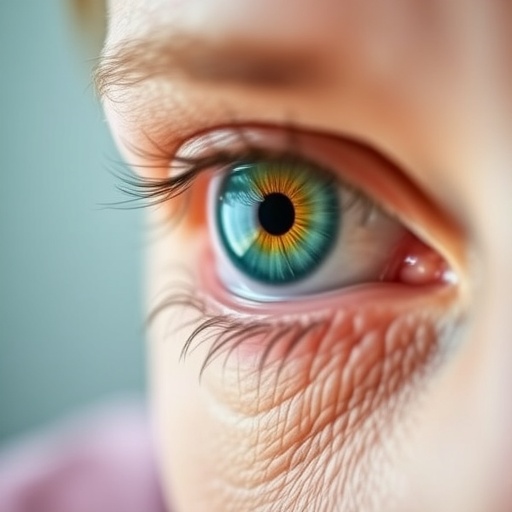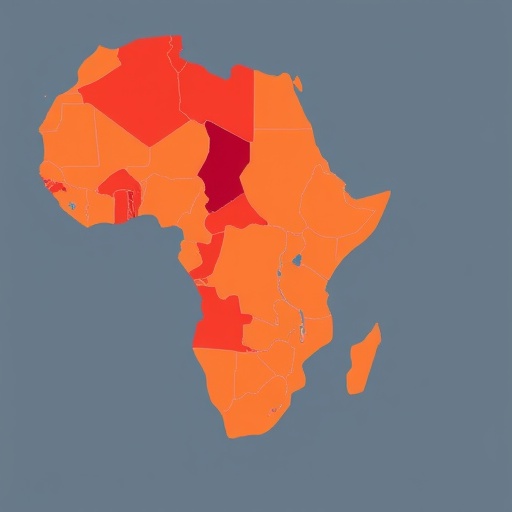Dry Eye Disease Linked to Menopause: A Hidden Challenge for Midlife Women
CLEVELAND, Ohio — As women transition through menopause, a myriad of symptoms often emerge, dominated by hot flashes, mood changes, and vaginal dryness. However, recent research has spotlighted a less recognized but equally disruptive symptom affecting many midlife women: dry eye disease. This ocular condition, marked by insufficient tear production or rapid tear evaporation, compromises eye comfort and health, with a pronounced prevalence observed in postmenopausal women compared to their perimenopausal counterparts. The findings, poised to be revealed at the 2025 Annual Meeting of The Menopause Society in Orlando, emphasize the importance of expanding clinical awareness regarding ocular health during menopause.
Dry eye disease is a multifactorial disorder affecting millions worldwide, characterized by a disturbance in the tear film sustaining the eye’s surface. Inadequate lubrication can provoke sensations of dryness, grittiness, burning, or stinging, often accompanied by ocular redness and inflammation. Chronic or neglected cases may progress to corneal damage and increase susceptibility to infections, imposing significant impacts on quality of life. Despite its commonality, many patients remain undiagnosed, partly because dry eye symptoms overlap with other ophthalmologic or systemic conditions.
A variety of risk factors contribute to the pathophysiology of dry eye disease. Aging itself is a predominant driver, altering tear production and meibomian gland function. Allergic conjunctivitis and autoimmune disorders, such as Sjögren’s syndrome, exacerbate tear deficiency through inflammatory pathways. Beyond intrinsic factors, extrinsic contributors include environmental irritants, prolonged screen time, and the use of contact lenses. Medication profiles can also influence tear dynamics; notably, common prescriptions for hypertension and depression have been linked to increased dry eye risk, underscoring the complexity of its etiology.
Sex steroid hormones, particularly estrogens and androgens, are intimately involved in the maintenance of the lacrimal glands and ocular surface homeostasis. Hormonal fluctuations inherent in menopause may disrupt this delicate balance, potentially leading to tears that are quantitatively or qualitatively insufficient. This hormonal influence suggests that menopause is not merely a systemic endocrine event but one that profoundly affects ocular health, meriting focused investigation.
The recent cross-sectional analytical study encompassed over 3,500 women, average age 52, to elucidate the relationship between menopausal status and dry eye disease prevalence. Utilizing the validated Ocular Surface Disease Index (OSDI) questionnaire, the researchers assessed symptom severity and impact among premenopausal and postmenopausal subjects. Alongside menopause status, participants’ history of autoimmune disease, tobacco usage, and contact lens wear were examined as potential modifiers of dry eye risk, providing a comprehensive view of contributing factors.
Results revealed a striking discrepancy: dry eye disease affected 57.38% of postmenopausal women compared to 53.22% of premenopausal participants. Although the difference may appear modest at first glance, the elevated prevalence in the postmenopausal population signifies the role menopausal transition plays in exacerbating ocular surface compromise. These findings challenge healthcare practitioners to refine their screening processes and integrate ocular evaluations when assessing midlife women.
Dr. Debora Yankelevich, the study’s lead investigator from Hospital de Clinicas Jose de San Martin in Buenos Aires, Argentina, emphasized, “Clinicians should incorporate dry eye disease assessment into their routine evaluations of women undergoing menopause, as it remains an underrecognized issue with tangible consequences.” Encouraging early identification could pave the way for targeted interventions that prevent progression and preserve vision-related quality of life.
The underlying mechanisms linking menopause and dry eye disease likely revolve around hormonal modulation of tear production and ocular surface inflammation. Age-related atrophy of lacrimal and meibomian glands combined with reduced androgens may impair the lipid layer of the tear film, accelerating evaporation rates. Additionally, increased inflammatory mediators may perpetuate epithelial damage and hinder glandular function. Parsing the precise influences of aging versus hormonal alterations is essential for developing precise therapeutic strategies.
Dr. Stephanie Faubion, medical director for The Menopause Society, noted the broader implications of these findings: “Understanding how aging and hormonal shifts intersect to impact eye health is vital. Early detection of dry eye symptoms can enable timely, individualized treatment plans that safeguard comfort, visual acuity, and ocular surface integrity.” Incorporating ocular health into the midlife women’s health paradigm enhances holistic care delivery during this pivotal life stage.
The study’s comprehensive approach underscores a critical need for educational initiatives both for patients and healthcare providers about dry eye symptomatology in menopausal women. Often overshadowed by more widely recognized menopausal symptoms, eye discomfort can significantly impair daily functioning yet remains frequently overlooked. Raising public and professional awareness will facilitate diagnosis, reduce under-treatment, and motivate further research into hormone-based treatments for ocular surface disorders.
As The Menopause Society continues to lead research and education efforts regarding women’s health during menopause, this emerging evidence highlights an overlooked domain warranting attention. The intricate interplay of hormones, aging, and systemic health conditions creates a fertile ground for future investigations targeted at unraveling dry eye disease pathogenesis and innovating treatment options.
Both Dr. Yankelevich and Dr. Faubion are available to discuss the study’s implications ahead of its formal presentation at the 2025 Annual Meeting. Their insights will contribute to expanding clinical protocols and fostering interdisciplinary collaborations aimed at optimizing midlife women’s ocular health outcomes globally.
For medical professionals and women navigating menopause, this new understanding of dry eye disease marks an important advance. Addressing this silent but impactful symptom can dramatically improve quality of life, empowering women not only to manage menopause’s obvious challenges but also to preserve their vision and ocular comfort in the years beyond.
Subject of Research: People
Article Title: Dry Eye Disease: An Unrecognized Problem in Clinical Practice
News Publication Date: October 21, 2025
Web References: http://dx.doi.org/10.1097/GME.0000000000000002541
Keywords: Health and medicine, dry eye disease, menopause, postmenopausal women, ocular health, tear production, hormonal changes, aging, ocular surface disease, women’s health
Tags: clinical awareness of dry eye diseasecorneal damage from untreated dry eyediagnosing dry eye disease in womendry eye disease in midlife womenhormonal changes and eye conditionsimpact of menopause on tear productionmenopause and eye healthmenopause-related health challengesmultifactorial nature of dry eye diseaseocular symptoms during menopausepostmenopausal women and eye healthquality of life and eye conditions





